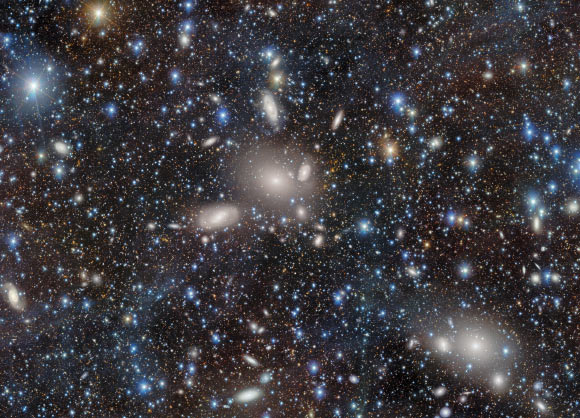The Antlia galaxy cluster is a group of at least 230 galaxies held together by gravity; this cluster is unusual — unlike most other galaxy clusters, it appears to have no dominant galaxy within it.
Galaxy clusters are fundamental building blocks of the Universe, like stars and galaxies.
Typically, these structures contain thousands of galaxies of all ages, shapes and sizes.
They have a mass of about one million billion times the mass of the Sun and form over billions of years as smaller groups of galaxies slowly come together.
At one point in time galaxy clusters were believed to be the largest structures in the Universe — until they were usurped in the 1980s by the discovery of superclusters, which typically contain dozens of galaxy clusters and groups and span hundreds of millions of light-years.
However, clusters do have one thing to cling on to; superclusters are not held together by gravity, so galaxy clusters still retain the title of the biggest structures in the Universe bound by gravity.
“Galaxy clusters are some of the largest known structures in the known Universe,” NOIRLab astronomers said in a statement.
“Current models suggest that these massive structures form as clumps of dark matter and the galaxies that form within them are pulled together by gravity to form groups of dozens of galaxies, which in turn merge to form clusters of hundreds, even thousands.”
“One such group is the Antlia cluster, located around 130 million light-years from Earth in the direction of the constellation of Antlia.”
Also known as Abell S636, the Antlia cluster is the third-nearest to the Local Group after the Virgo cluster and Fornax cluster.
The new image of the Antlia cluster was captured by the Dark Energy Camera (DECam), mounted on NSF’s Víctor M. Blanco 4-m telescope at Cerro Tololo Inter-American Observatory in Chile, a program of NSF’s NOIRLab.
It captures only a portion of the 230 galaxies that so far have been found to make up the…
Read the full article here

